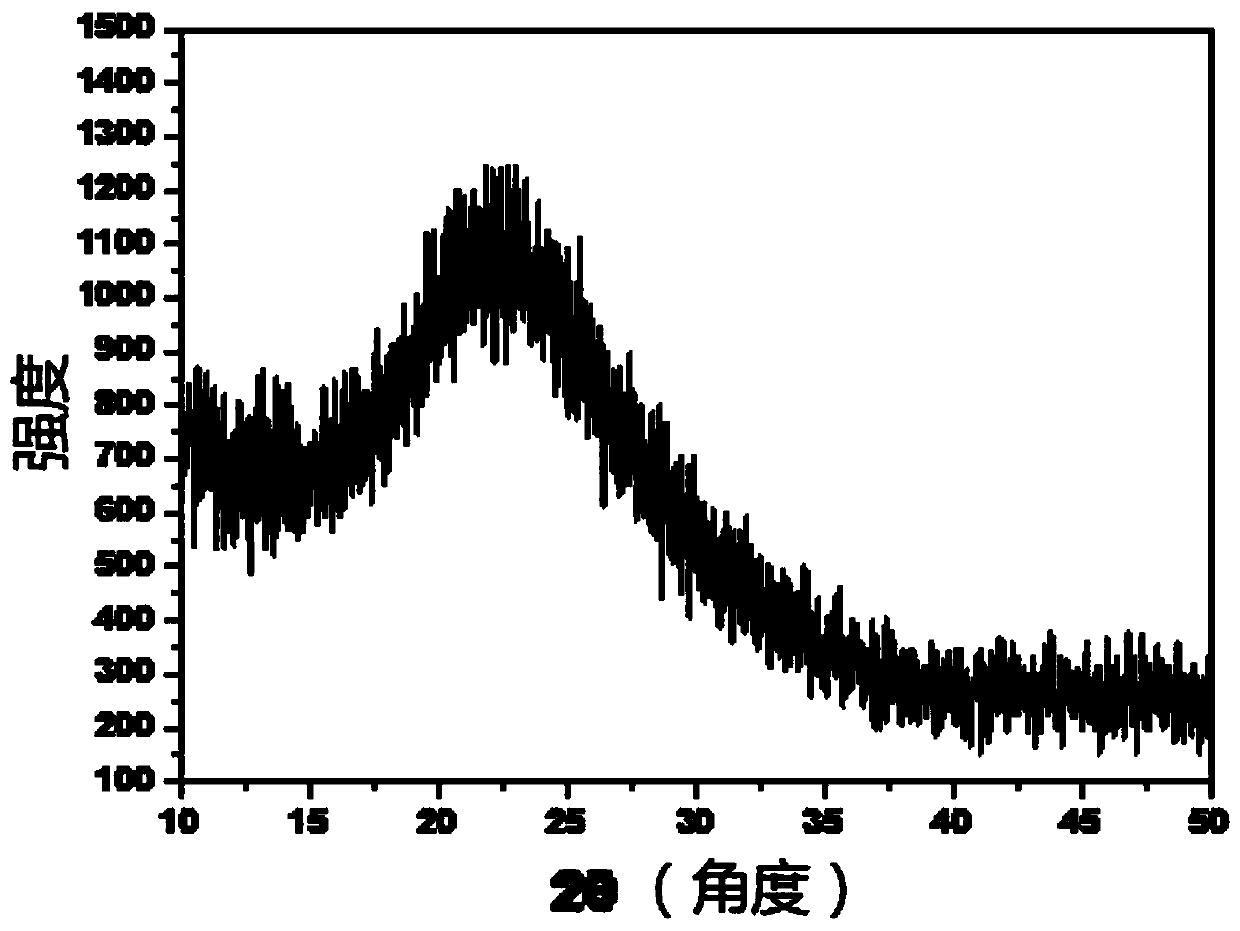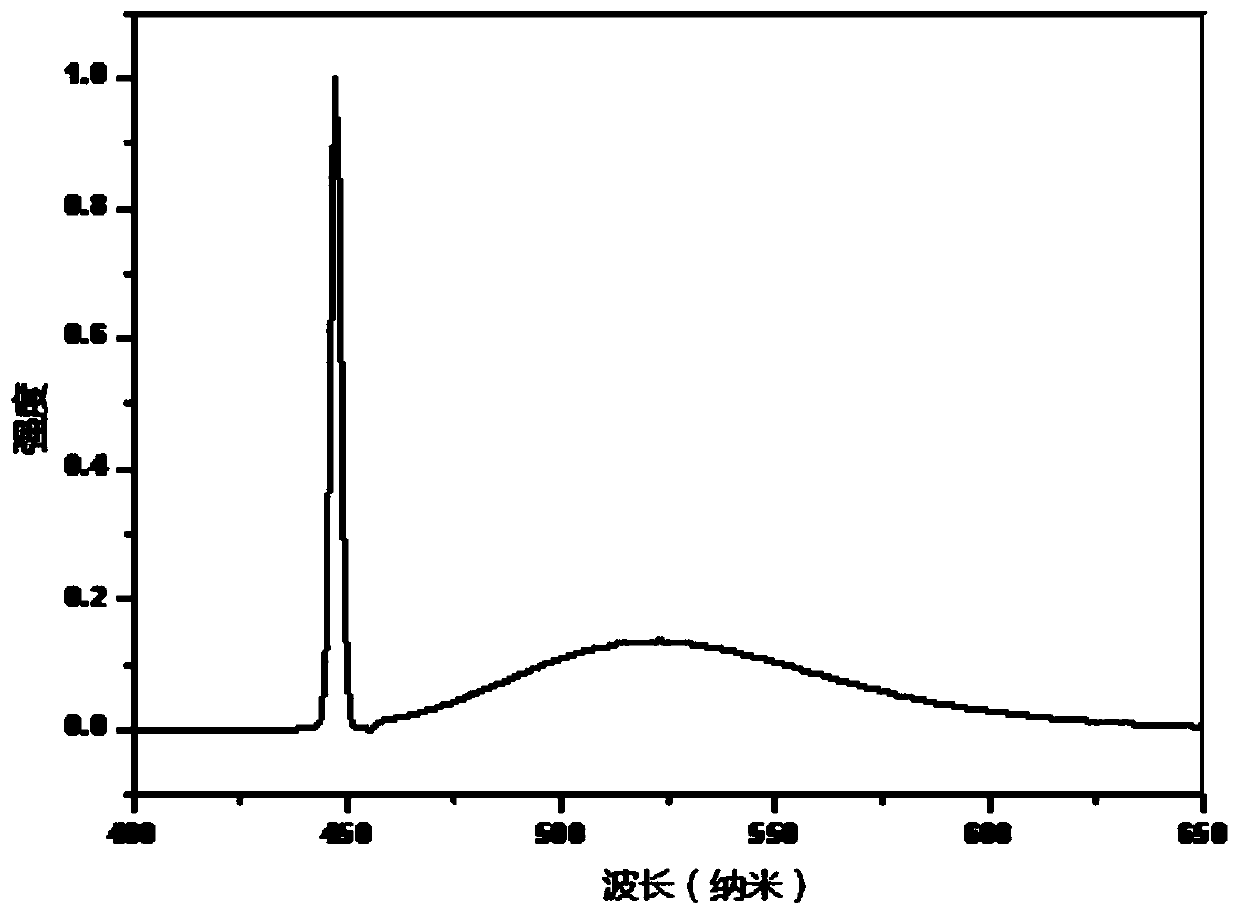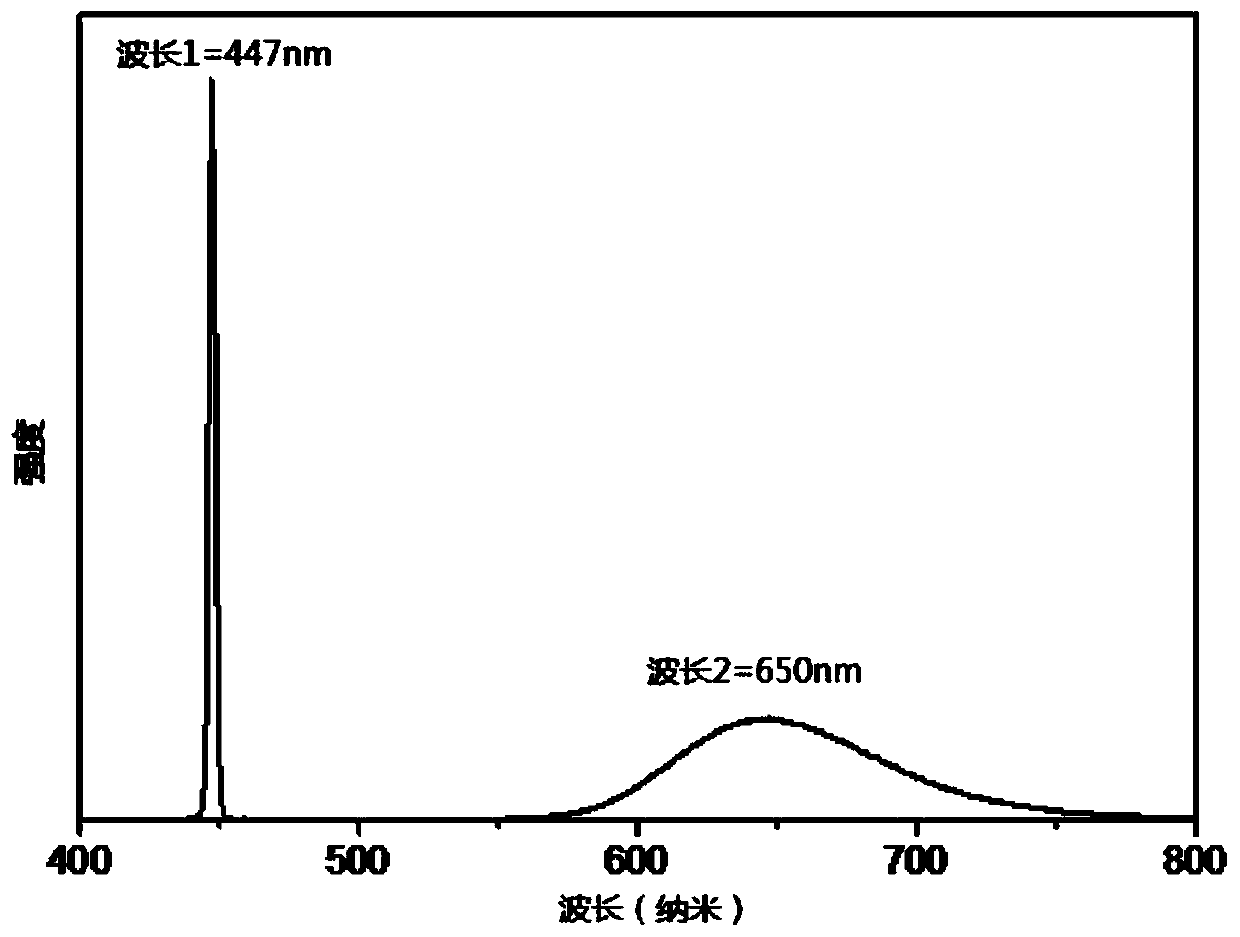Method for preparation of luminescent glass ceramic with low-melting point glass powder
A low-melting glass, luminescent glass technology, applied in glass manufacturing equipment, glass molding, semiconductor devices of light-emitting elements, etc., can solve problems such as high toxicity, and achieve the effect of avoiding thermal degradation
- Summary
- Abstract
- Description
- Claims
- Application Information
AI Technical Summary
Problems solved by technology
Method used
Image
Examples
Embodiment Construction
[0037] In a specific embodiment of the invention, SnF 2 Purchased from Hubei Henglvyuan Technology Co., Ltd., with a purity of 99.5%; other drugs were purchased from Shanghai Aladdin Biochemical Technology Co., Ltd., with an analytical purity. SnF 2 Introduced by stannous fluoride, P 2 o 5 Introduced by ammonium dihydrogen phosphate, glass powder phase transition temperature adjustment component B 2 o 3 Introduced by boric acid, V 2 o 5 Introduced by ammonium metavanadate, others are introduced by corresponding oxides. The model of the differential scanning calorimeter is the Q2000 model of TA Instruments Company of the United States. YAG: Ce 3+ Yellow phosphor was purchased from Shenzhen Xingliangli Technology Co., Ltd. CaAlSiN 3 : Eu 2+ The red phosphor was prepared according to the following literature: [1] Pei Haoyu. Preparation and performance research of Eu-doped CaAlSiN_3 and YAG red phosphor [D]. Nanchang University, 2015. When the glass liquid is cooled an...
PUM
| Property | Measurement | Unit |
|---|---|---|
| particle diameter | aaaaa | aaaaa |
| softening point | aaaaa | aaaaa |
| transition temperature | aaaaa | aaaaa |
Abstract
Description
Claims
Application Information
 Login to View More
Login to View More - R&D
- Intellectual Property
- Life Sciences
- Materials
- Tech Scout
- Unparalleled Data Quality
- Higher Quality Content
- 60% Fewer Hallucinations
Browse by: Latest US Patents, China's latest patents, Technical Efficacy Thesaurus, Application Domain, Technology Topic, Popular Technical Reports.
© 2025 PatSnap. All rights reserved.Legal|Privacy policy|Modern Slavery Act Transparency Statement|Sitemap|About US| Contact US: help@patsnap.com



